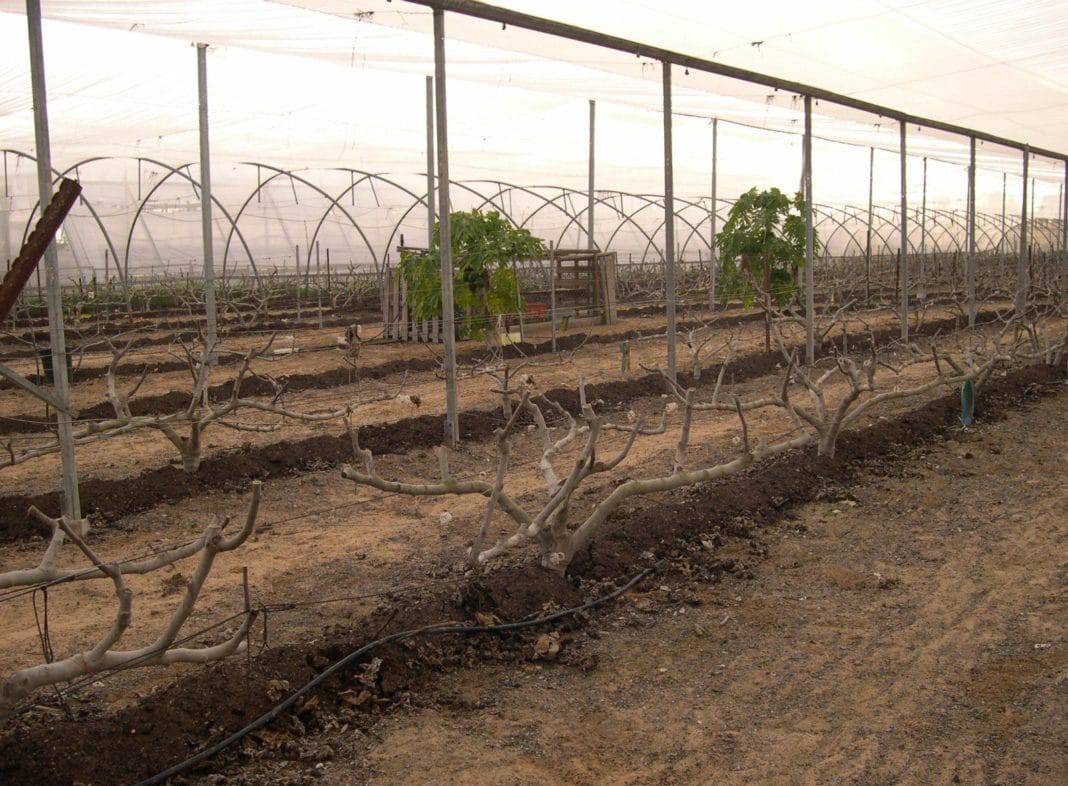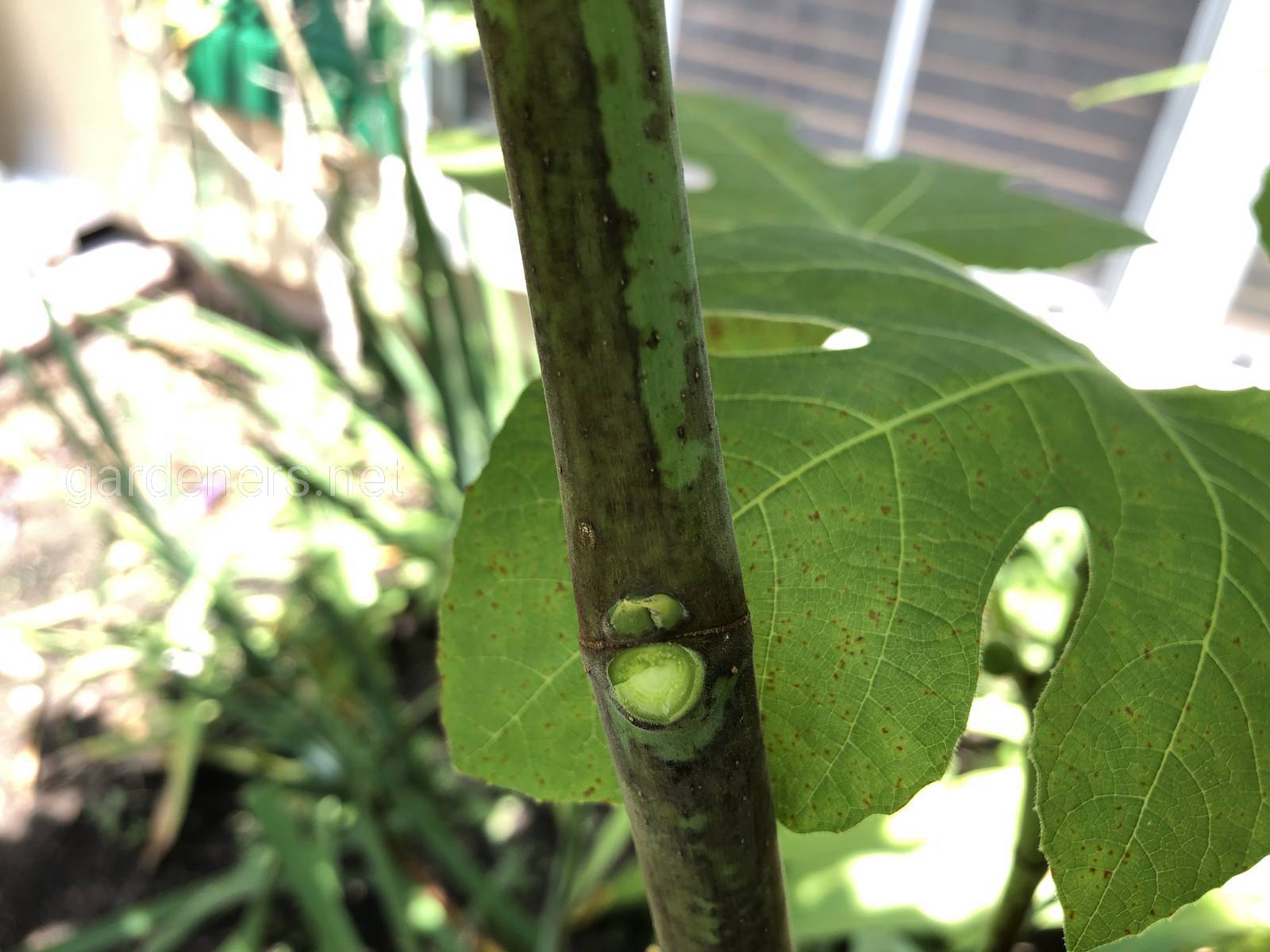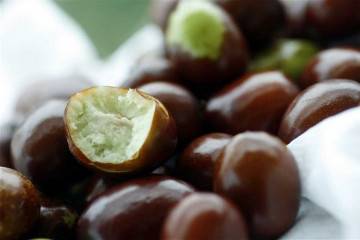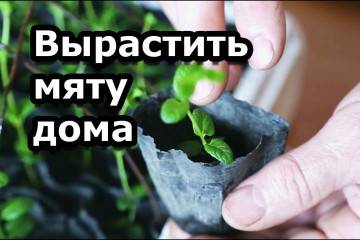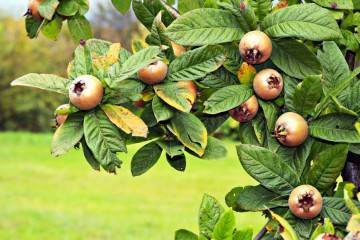Fig tree - how to plant in the garden
Content:
The fig tree is a ten-meter-long tropical shrub covered with broad, three-toed leaves. Its other names are fig tree, wine berry, fig, fig. It is this plant that is considered the most ancient, and not without reason - the first mentions of it appeared in the Old Testament. The article discusses a cultivated fig plant, care and cultivation in the open field, pruning and reproduction of this interesting shrub.
Fig tree - description of the plant and its fruits
To understand the conditions in which to keep a fig tree, you need to know where the fig grows. It was first grown in the ancient state of Arabia.
This heat-loving shrub can take root wherever there is enough sun and no severe frosts. In modern times, fig trees can be found in the Mediterranean, Central Asia and the United States. In Russia, it is grown in the Crimea and the Caucasus. For cultivation in Central Russia, there are special, relatively frost-resistant varieties.
The benefits of figs
What are figs? This is not a fruit, not a berry or a vegetable, but a so-called inflorescence the size of a large peach. It is impossible to see with the naked eye how the figs bloom - the fact is that the fruits of this tree are a flower turned inside out.
The rind is quite thick and dense, covered with a purple skin. The flesh of the fresh fruit is bright red. It contains many small white seeds. Figs are eaten raw or dried.
The nutritional properties of the fruits of this tree were discovered in antiquity. People began to dry fig fruits - this way they were stored longer, retaining their valuable properties, and they could easily be taken with them. Figs are a large amount of glucose, fructose, iron, phosphorus, potassium, sodium, calcium and a number of useful vitamins - A, B1, B2, B5, B6, C, E, PP.
Useful properties include:
- prevention of heart and vascular diseases;
- restoration of the nervous system and brain activity;
- cleansing the body and normalizing metabolism;
- improving digestion;
- increased immunity;
- improved potency.
Popular varieties
When do figs ripen? This question cannot be answered unequivocally. There are about a thousand varieties of figs in the world, which differ in the appearance of the plant and its fruits, the degree of resistance to various weather conditions and the duration of fruiting. Many are interested in how figs grow in cold countries. In Russia, for growing fig trees in the open field, it is better to take frost-resistant and unpretentious varieties.
Brunswick variety
This type of fig tree is considered one of the most resistant to cold and frost.
Brunswick bushes can withstand up to 25 degrees of cold. Its other advantages include self-fertility and early maturity - it gives a crop as much as twice a year. The very first fruits appear in July, and after a couple of months you can prepare for the second wave of the harvest. It will be even more abundant.
Kadota variety
Another frost-resistant and fruitful fig variety is Kadota. It is most widely used in California.
It differs from the previous species in the bright green color of the fruits and later harvest dates. As in the previous case, the tree bears fruit twice a year: in early August and late autumn.
Variety Crimean black
Derived from French samples by Russian scientists.
The first wave of the harvest takes place in July, and the second, more scarce, in early autumn. The fruits of the Crimean tree are dark purple in color. They have a rich, slightly sour taste.
It is a self-pollinating variety and is therefore suitable for indoor cultivation.
Dalmatian variety
First received in Georgia. Not so frost-resistant - it can only withstand up to 15 degrees of cold. This variety belongs to the late ripening.
The first harvest can be obtained only by the end of summer, and the second in November. The fruits of this fig variety are small pear-shaped and bright yellow in color.
Growing a fig tree outdoors
The fig tree grows well at home. But, unfortunately, it does not yield a harvest. Therefore, many gardeners prefer to plant the plant in open ground. This option is suitable only for residents of warm regions.
Site and soil selection
The landing site should be well lit. You should not plant a tree in a low place or shade - it will not take root there. The presence of groundwater is an optional but desirable factor.
The quality of the soil does not play a special role. The main condition is that it must pass water well. Before planting, the soil is weeded and enriched with humus or compost. It is also necessary to add a thick drainage layer - about ¼ meter.
Landing
There are two methods of planting a plant in open ground - trench and pit. You need to choose a method based on the climatic conditions of the area.
The step-by-step process is as follows:
- Soil preparation. Several deep trenches are dug on the selected plot of land. The size of the trenches is adjusted depending on the climate - the colder the region, the larger the pit should be. The approximate depth is a meter and a half, width is from half a meter to a meter.
- Strengthening the trench. The walls of the trench are lined with stone, brick or board. This will help keep the root system warm during the winter.
- Preparation of seedling holes. At the bottom of the trench, small holes are dug for future plants. A layer of drainage and enriched soil is also placed there.
- Landing. The seedlings are placed in holes and watered.
- Greenhouse installation. To create a protective dome, you will need garden arches and dense covering material.
The second method is suitable for residents of the southern part of Russia.
Planting a tree in a hole:
- Fossa preparation. In the open ground, a hole is dug about the size of a square meter. A layer of drainage and earth is poured onto the bottom. As in the previous method, the walls are reinforced with stone or brick. Before planting seedlings, the soil is moistened with plenty of water.
- Disembarkation. The fig sprout is placed on the bottom of the pit and carefully covered with earth.
Plant care rules
The fig tree needs regular feeding. They are usually performed twice a month.
Top dressing is carried out in the following sequence:
- nitrogen fertilizers are used at the beginning of the growth stage;
- followed by phosphate fertilizers;
- by the end of the growth stage, only potassium-based fertilizing is used;
- at the stage of sleep, any fertilizers are excluded.
Watering
This plant needs frequent and abundant watering - at least 12 liters of water per week. The exception is the periods of harvest and tree dormancy. The amount of moisture is increased after the rooting stage or before feeding.
Pruning
Pruning is an important step in grooming. Not only the appearance, but also the yield of figs depends on it. Care and cultivation of this plant outdoors is different from caring for a house plant. Pruning of branches is carried out exclusively in spring or late autumn.
Young plants in the first year of their existence are cut off almost completely, leaving one branch. It is better to choose the healthiest, straightest and strongest one. The next year, the same branch is cut at the level of the bud. This is necessary for the formation of a beautiful tree shape. After another year, all branches sticking out are cut off. All these procedures are carried out in late autumn.
Looking at a fig tree, it is difficult to understand what it is - a shrub or a tree. In fact, it is both a shrub and a tree, it can be shaped in different ways.
Forming is carried out in two ways:
- for standard figs, you will need 6-7 branches about half a meter long;
- for a bush form - a pair of short branches.
Fig tree propagation
There are several ways to propagate this tree. They differ among themselves in the degree of labor intensity and the percentage of germination.
Seeds
Seed propagation is considered the most time consuming and unreliable method. The seeds can be purchased from the store or obtained from fresh fruit. To do this, they need to be rinsed and dried. The seeds retain their properties for several years.
For germination, you will need the seeds themselves, a pot or sump, drainage and soil. A small layer of drainage is placed at the bottom of the pot, then the soil is poured. Several seeds are placed in a shallow hole at once. After moistening the soil, cover the pot with foil.
The first shoots should appear no earlier than a month later. After the sprouts get stronger and grow up, they need to be planted in a separate pot or garden.
Layers
An easier and easier way to reproduce is by layering. With their help, you can get a new tree in 2 years. This method is only suitable if there is already one mature and healthy fig tree on the site.
To carry out reproduction by this method, the following actions are carried out:
- a small hole with a depth of about a quarter of a meter is being prepared next to the trunk;
- one of the branches of the tree is bent horizontally and fixed in the hole;
- from above, the layering is covered with mulch.
Using cuttings
This method requires a mature fig tree. To get cuttings, cut off several strong branches with buds with a sharp knife. They should be about 15 centimeters long.
The harvested branches are dried for several days, then the sections are disinfected and placed in pots with soil.
To create warmth, the pot is wrapped in plastic. Until the cutting grows its own root system, it needs to be moisturized and ventilated. This process usually takes no more than two months.
Difficulties and illnesses
The most common diseases of the fig tree are:
- coral spot - causes an increased growth of harmful fungi, leading to the drying out of the plant;
- gray rot - leads to rotting of shoots, leaves and fruits;
- viral mosaic - slows down the growth of a tree, deforms the crown;
- anthracnose - in this disease, fungal spores affect the immunity of the fig;
- pest infestation - the leaf beetle or bast beetle affects the tree, as a result, the leaves begin to fall off.
Many people are interested in the question of why the figs drop their fruits unripe or do not bear fruit at all. The main reason for this is inappropriate living conditions. Fig is a southern tree that needs a long day of light, warmth and a lot of bright color.Lack of essential substances leads to unripe fruits or their complete absence. They just don't have the strength to keep up. Another reason why figs fall off may be disease or pest infestation. A diseased tree can only be fertilized after it is completely cured.
It is not very easy to grow a fig tree in Russia - not every region is suitable for this plant. However, the inhabitants of the south may well try to cultivate figs. With proper care, it will delight you with delicious fruits.
Growing a fig tree in the Russian climate is not an easy task, but it is quite real. You just need to regularly look after him, observing the rules. Using the tips for caring for this exotic shrub, you can grow a beautiful and healthy plant that will delight its owner with healthy and fragrant fruits.



